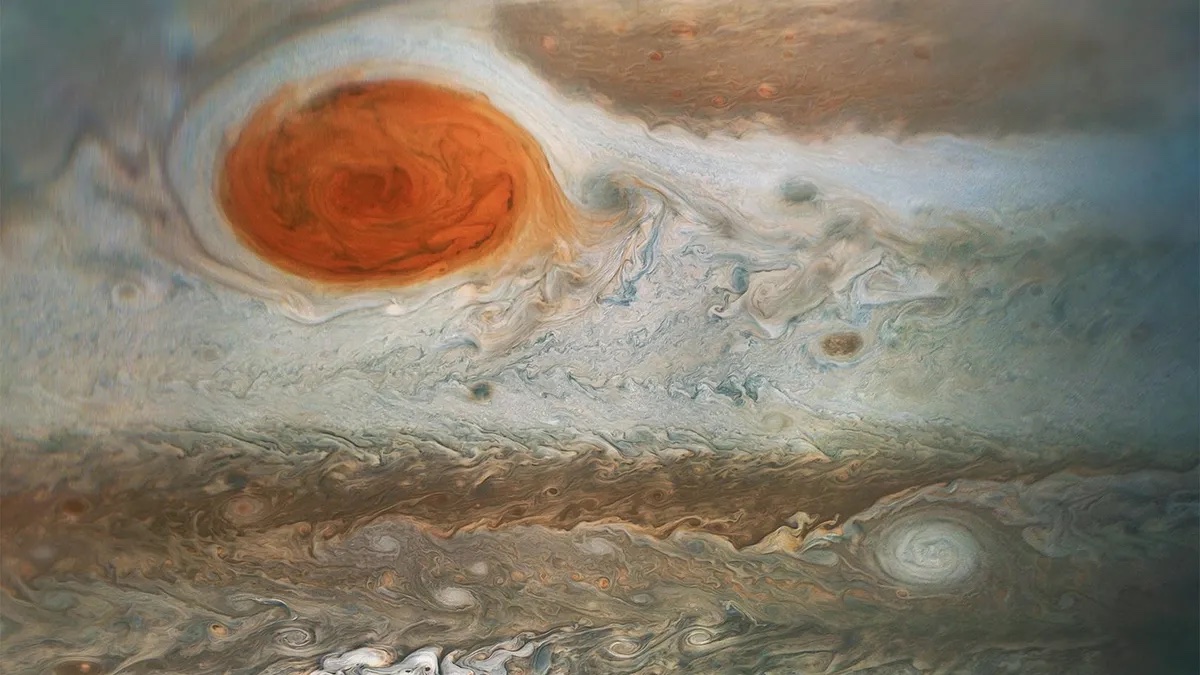
In 1665, Italian astronomer Giovanni Cassini observed a giant dark spot on Jupiter, which he called the “Permanent Spot.” (English scientist Robert Hooke might’ve discovered it a year earlier, in 1664, but I digress.) Though astronomers mysteriously lost track of the spot for centuries, we’ve always thought that the original “Permanent Spot” might be the Great Red Spot — a massive storm on Jupiter’s surface — we know and love today.
Well, we were wrong. A new study of the Great Red Spot suggests it most likely is a newer, younger storm.
After the “Permanent Spot” was first observed in the 17th century, we lost track of it. The last observation of that spot was in 1713. More than a century would pass before we caught sight of a new spot — one that happened to be on the same latitude as the original. This spot, discovered in 1831, is the Great Red Spot of today.
“From the measurements of sizes and movements, we deduced that it is highly unlikely that the current Great Red Spot was the ‘Permanent Spot’ observed by Cassini,” Agustín Sánchez-Lavega, a planetary scientist at the University of the Basque Country in Bilbao, Spain, who led the research, said in a statement. “The ‘Permanent Spot’ probably disappeared sometime between the mid-18th and 19th centuries, in which case we can now say that the longevity of the Red Spot exceeds 190 years.”
Related: Uranus and Neptune aren’t made of what we thought, new study hints
Using data concerning the Great Red Spot’s changes over time, Sánchez-Lavega and his colleagues ran computer simulations to establish how the vortex might’ve formed. The leading theory is wind instability which ultimately produced the “elongated atmospheric cell” we see today.
What we do know for sure about the Great Red Spot is that it’s shrinking. An 1879 observation placed the size of the spot at 24,200 miles (39,000 kilometers) along its longest axis. But now, it currently spans 8,700 miles (4,000 kilometers) on its longest axis. The team will conduct further simulations to predict whether or not the Great Spot will eventually disappear like Cassini’s Permanent Spot — and perhaps be reborn some centuries later as a new vortex.
The team’s research was published on June 16 in the journal Geophysical Research Letters.
Originally posted on Space.com.




